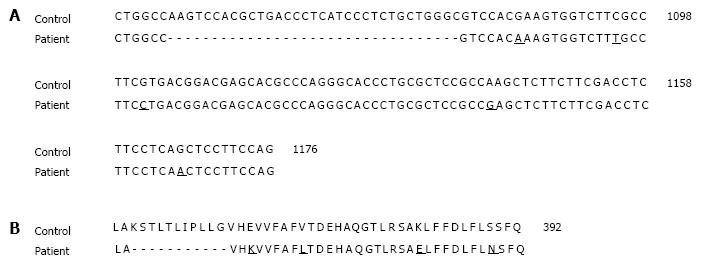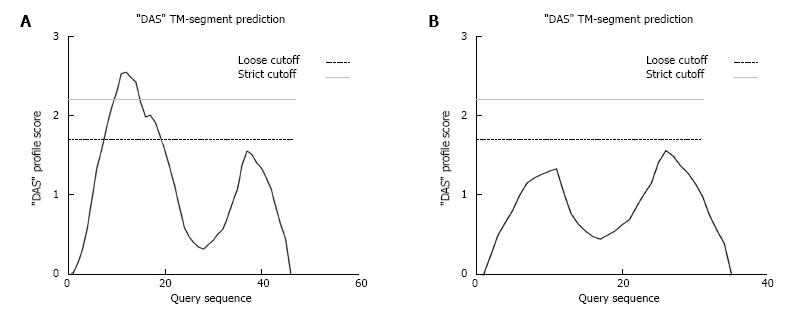Copyright
©The Author(s) 2015.
World J Gastrointest Surg. Apr 27, 2015; 7(4): 60-66
Published online Apr 27, 2015. doi: 10.4240/wjgs.v7.i4.60
Published online Apr 27, 2015. doi: 10.4240/wjgs.v7.i4.60
Figure 1 Islet from patient.
Immunohistochemistry for A: Insulin; B: Glucagon, x 200 magnification (600 μm at maximum diameter).
Figure 2 Genetic findings.
A: Sequencing results showing a heterozygous 33 nucleotide deletion and 5 point mutations in exon 11 of the GCGR; B: Amino acid sequence showing K349_G359del, E362K, V368L, K381E, S389N in the GCGR. Alignments done using Clustal W multiple sequence alignments software[25]. Numbers indicate the position of the last residue shown along the GCGR cDNA/protein.
Figure 3 Membrane topology prediction.
The loss of 11 amino acids from the glucagon receptor (GCGR) 6th transmembrane domain is predicted to prevent the insertion of GCGR into the plasma membrane. A: Predicted normal GCGR membrane topology; B: Predicted K349_G359del GCGR membrane topology. Software used: MetaTM[22]; input amino acid sequence shown in Figure 2B. DAS: Distributed Annotation System.
- Citation: Miller HC, Kidd M, Modlin IM, Cohen P, Dina R, Drymousis P, Vlavianos P, Klöppel G, Frilling A. Glucagon receptor gene mutations with hyperglucagonemia but without the glucagonoma syndrome. World J Gastrointest Surg 2015; 7(4): 60-66
- URL: https://www.wjgnet.com/1948-9366/full/v7/i4/60.htm
- DOI: https://dx.doi.org/10.4240/wjgs.v7.i4.60











